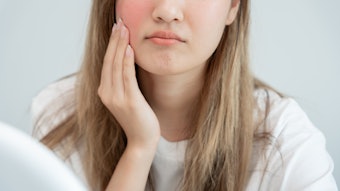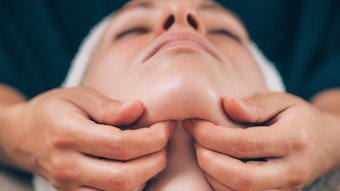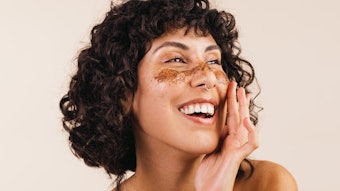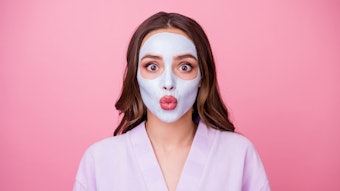
Honey is made from bees gathering nectar from the flowers, plants and trees they visit. When a bee locates a “good find” of nectar, it may return to the hive and do a “bee dance” to show the other bees where to find that flower or plant. Bees are always working together for the benefit of the hive and never just to fill their own bellies. Once all the nectar and pollen has been collected, the bees go back to the hive and wax comb cells are filled. The cell is capped with wax, and the honey is left to cure until the bees need it.
Beeswax is created by the bees to hold honey and pollen, and keeps them efficiently stored until needed. It takes an incredible amount of energy for bees to create wax. Wax colors range from white to yellow to brown, and is used in all kinds of things from furniture to candles to cosmetics. In a water-based cream, it can be used to bind water and oil together to create an emulsion. In addition, it is a moisturizer. Often, beeswax is included in lip balms, body balms and creams due to its moisturizing and skin-protecting qualities.
Propolis is a sticky resin the bees gather from trees and other plants. Plants produce resins and gums, which are produced at wound sites, or in new buds or leaves. Propolis is usually dark brown and sticky. When cold, the propolis is brittle and when warm, it has a thick taffy consistency. Bees use the propolis to protect the hive. They seal any cracks and open areas with propolis to keep invaders out, as well as wind and rain.
Propolis is antifungal, antibacterial, anti-inflammatory and stimulates cell regeneration. Some of its uses are as a remedy for colds, flu and sore throats, and it is used topically to treat inflammation and wound-healing. Propolis is full of flavonoids and antioxidants that help fight infection and boost immune function. It can be found in tincture form, cosmetic creams or alone. Brazilian green propolis is being studied extensively for menopausal support, cold care, dental issues, wound-healing and multiple other medicinal uses. If you use propolis in tincture form, it is an alcohol base and when used topically, can sting. Propolis can cause contact dermatitis, but this is a rare outcome.
Honey for the skin and the body
The beauty industry is a multibillion dollar industry and the trend toward incorporating more natural ingredients is growing. Clients are interested in experiencing natural farm-to-table types of treatments. There are many products to choose from that incorporate honey, beeswax or propolis and can be added to your spa offerings, and honey itself can be one of the easiest ingredients to incorporate into spa and skin care treatments.
- Honey has been used since ancient times as a medicine and beauty aid. The Egyptians used it as both, and it is depicted on tombs and hieroglyphics with high regard. It was also used by the Chinese, Arabs, Greeks and Romans, and there are a variety of historical texts listing the benefits of honey. Both Dioscorides and Hippocrates wrote of its numerous medicinal uses.
- Honey contains more than 180 substances, which include a mixture of carbohydrates, proteins, amino acids, vitamins, minerals, antioxidants, enzymes and other compounds. It also contains flavonoids, which are like super antioxidants—darker honeys are said to have more antioxidants. Today, honey and its chemical components are being extensively studied for their wound-healing abilities.
- Honey is anti-inflammatory; it reduces inflammation in the body, as well as topically on the skin.
- Honey is a humectant, meaning it draws moisture to the skin, helping keep it soft, supple and protected.
- Honey is a slight emulsifier, meaning it can help contribute to creating a water-based cream by adding to the emulsion’s stability. It also has some minor preservative qualities.
- Honey is antibacterial, and it’s wound-healing properties are well-known, not only among herbalists and naturalists, but also among the medical and scientific communities.
Manuka honey is used to treat burns and helps with the healing of the skin by providing a protective antibacterial environment. Studies have shown Manuka honey to be quite effective in the area of wound-management, and research continues at the Waikato Honey Research Unit at the University of Waikato in New Zealand.
Not all honey is alike. The plants, trees, flowers and time of year the honey bees gather nectar and pollen determine the nutrients of the honey. If you were to visit a local honey store, you would see all of the different varietals of honey. Often beside the label, the different varieties can be distinguished by the color of the honey. Manuka honey and Tualang honey are currently the most studied varieties. Tualang honey is being studied as an anti-cancer agent. As the benefits of honey continue to be explored, it is certain that more of the therapeutic benefits of additional varietals will also come to light.
Honey and spa treatments
Honey is an excellent ingredient to use for a facial. It is humectant, drawing moisture from the air to the skin. Due to its chemical structure, it also can be a wonderful, light nonfriction-based exfoliant for clients with sensitive skin. It can treat blemishes and other skin conditions because of its antibacterial and anti-inflammatory properties. (See Honey Facial Treatment Options.)
Along with topical benefits, a tablespoon of honey before bed can help regulate sleep. Studies have shown if body systems are able to regulate and regenerate, you are in better health by not contributing to metabolic stress.
When possible, choose raw honey instead of commercial honey. If clients are allergic to bee stings, it is not advisable to use items produced by bees. In addition, remember that bees go to various plants, flowers and trees in order to gather pollen and nectar. If the client has severe environmental allergies, this may also cause a problem. Honey shouldn’t be used on open wounds, and children under one year of age should not consume honey. As with any product, discontinue use if a reaction occurs. If irritation persists, advise clients to see their physician.
A beautiful environment
It has been said that every third bite of food eaten was pollinated by a bee. If bees did not exist, people would have to manually pollinate trees, plants and flowers—an incredible task and quite impossible. Bees and other pollinators make beautiful foliage a reality. In all instances, planting bee forage (food) whenever possible is a benefit to the planet and humankind. It is quite easy to do—many of the plants and flowers you love are food for the bees and other pollinators. There are many resources and nurseries that have information on plants that yield more nectar and pollen than others. By choosing these plants to incorporate in your gardens at home and at the spa, you contribute to helping the bees and your clients’ health—all while having a beautiful spa environment.
Michele Steinert is a natural products formulator, beekeeper and is the owner of Michele’s Apothecary in Sonoma County, California.










